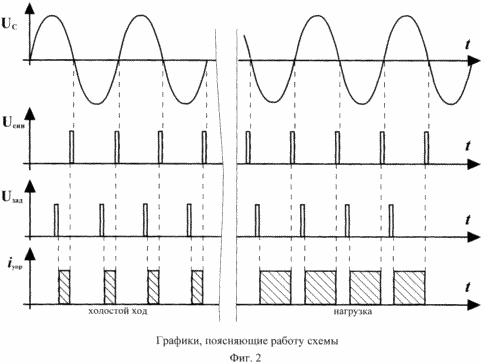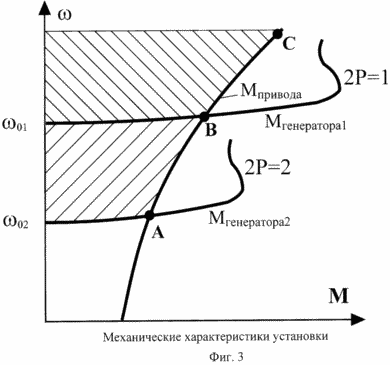| section Home
Production, Amateur Radio amateur Model aircraft, rocket- Useful, entertaining |
Stealth master
Electronics Physics Technologies invention |
space Mystery
Earth Mysteries Secrets of the Ocean Stealth section Map |
|
| Use of material is permitted for reference (for websites - hyperlinks) | |||
Navigation: => |
Home / Products Patents / In the section of the catalog / back / |
|
INVENTION
Russian Federation Patent RU2225531
![]()
Windmills (windmill)
Name of the inventor: NI Bogatyrev .; Vanurina VN .; Kurzin NN .; Kramer AS .; Zaitsev EA .; Erashov DA
The name of the patentee: Kuban State Agrarian University
Address for correspondence: 350044, Krasnodar, ul. Kalinina, 13, KGAU, FEC
Starting date of the patent: 2002.07.01
The invention relates to the electric power industry and is designed to convert wind energy into electricity with stable parameters of the output frequency and voltage. The technical result consists in stabilizing the frequency and voltage of the generator over a wide range of variation of the wind load is attained due to the fact that the wind power plant comprises an electromagnetic clutch with coil control, additional capacitors device voltage stabilization pulse shaper, the master oscillator frequency, the timing unit and the amplifier , the wind turbine via a transmitting device connected to the speed sensor and the drive shaft of an electromagnetic clutch, which output shaft is connected to the rotor of n-pole multi asynchronous generator, which windings are connected to the input of the switching unit, whose output is connected to the capacitors excitation additional capacitors to the output terminals , voltage regulation device and the pulse generator which is connected to the first input of the synchronization device, as its second input connected to the master oscillator frequency, the output synchronization unit connected to the input of the amplifier, and the latter - with an electromagnetic clutch control winding.
DESCRIPTION OF THE INVENTION
The invention relates to energy, in particular wind power installations and is intended for the conversion of wind energy into electrical energy at a stable frequency and voltage settings.
Known "wind turbine inertial energy accumulator" (a. P. 951 626, ICI H 02 P 9/42 of 15.08.82g.), Containing the wind wheel, the output shaft of which is connected to the shaft of the alternator connected to the drive unit and control and provided further electric machine and the AC generator is designed as an asynchronous machine with a squirrel-cage rotor, shaft and additional asynchronous machine is connected to the shaft of the inertial energy of the battery.
The disadvantage of this device is the low energy performance because multiple power conversion.
The closest the technical essence of the invention is (see. RU Patent 2133375, F 03 D 7/00 from 20.07.1997, the), consisting of wind turbine gear unit, speed sensor, n-pole asynchronous generator with capacitor excitation switching device. At the same load connection occurs in function of wind speed.
The disadvantage of this technical solution is the low energy performance in a range of poles and low switching frequency and voltage stability.
The technical solution of the present invention is to eliminate these drawbacks, namely the stabilization of the frequency and voltage of the generator to a wide range of wind load.
The stated object is achieved in that the wind power installation, consisting of a wind turbine, the transfer device, the speed sensor, n-pole asynchronous generator with capacitor excitation switching device further comprises an electromagnetic clutch with coil control, additional capacitors device voltage stabilization pulse shaper defining oscillator frequency synchronization unit and an amplifier, wherein the wind turbine via a transmitting device connected to the speed sensor and the drive shaft of an electromagnetic clutch, which output shaft is connected to the rotor of n-pole asynchronous multi generator whose windings are connected to the input of the switching unit, whose output is connected to the capacitors excitation , additional capacitors to the output terminals, the voltage regulation device and the pulse generator which is connected to the first input of the synchronization device, as its second input is connected with the master oscillator frequency, the output synchronization unit connected to the input of the amplifier, and the latter - with an electromagnetic clutch control winding.
The novelty of the technical solutions due to the fact that it further comprises an electromagnetic clutch with coil control, additional capacitors, a voltage stabilizing device, pulse shaper, the master oscillator frequency, the timing unit and an amplifier, which enables to stabilize the voltage and frequency of n-pole asynchronous multi generator within wide limits change wind flow.
According to the scientific, technical and patent literature author does not know the claimed combination of features aimed at the achievement of the task, and this decision does not follow obviously from the prior art, which allows to conclude that the level of invention solutions.
BRIEF DESCRIPTION OF DRAWINGS

1 is a schematic diagram

2 - graphs for explaining the operation of the circuit

3 - Mechanical Installation
The wind power installation comprises a wind wheel 1 coupled to the transmission device 2 (the multiplier), the transmitter output is connected to a speed sensor 3 and the driving shaft 4, the electromagnetic clutch 5 having a control winding 6 and the output shaft 7 connected to the rotor 8 n-pole asynchronous multi generator 9, the windings 10 and 11 connected to the input switching unit 12, whose output is connected capacitors drive 13, the additional capacitor 14 to the output terminals 15, device voltage regulator 16 and the pulse shaper 17, which is connected to the first input of the synchronization unit 18, and its second input connected to the master oscillator frequency 19, the output synchronization unit connected to the input of the amplifier 20 which is connected to the control winding of the electromagnetic clutch 6 5.
As any one propeller mechanical wind energy into mechanical transducer, n-multi-pole asynchronous generator 9 with a different number of pairs of poles of standard design can be used with short-circuited rotor 8. As the electromagnetic clutch 5 can be used with asynchronous or powder permissible rotation speed and transmitted torque. switching unit 12 switches the generator windings with high speed and can be contact and non-contact. As a voltage stabilizer 16 applies a pulse-width controller or equivalent with minimum losses in the regulatory elements. Pulse shaper 17 generates short pulses when passing through zero sine wave voltage (Figure 2, U syn). The clock frequency of 19 generates pulses of rectangular shape predetermined frequency, for example 100 Hz (Figure 2, the U back). Synchronization device 18 compares the phase between the frequency of the asynchronous generator and master clock frequency and generates a control pulse (Fig. 2, i Ex), which is amplified by amplifier 20 and controls the operation of the electromagnetic clutch. 3 has a velocity sensor output actuators (tracks, the pulses) in the number equal to the number of pairs of switching poles of the generator.
Windmills WORKS AS FOLLOWS
At the initial moment of the coil 6 of the electromagnetic clutch 5 is supplied a DC voltage generated maximum torque and rotor 8 n-pole asynchronous multi-generator rotates at a speed of the drive shaft 4. The switching unit 12 connects the excitation capacitors 13 and an additional 14 to 11 of the generator winding with lots the number of pole pairs.
When you reach the wind speed respectively 1 propeller and rotor 8 n-pole asynchronous multi-generator 9, the last set speed is raised and the voltage supplied to the load (operating point A on the mechanical characteristics of the installation, Figure 3). A further increase in the speed of the wind wheel 1 and the drive shaft 4, the electromagnetic clutch 5 (segment A-B, 3) causes a decrease in drive current i in the winding 6 Ex electromagnetic clutch 5 (idling, 2). The rotor 8 n-pole asynchronous multi-generator 9 while rotating at a constant speed and generates a stable frequency, given a predetermined frequency generator 19.
When connecting the load to the output terminals 15 (A, B, C), the resistance torque shaft n-pole asynchronous multi generator 9 increases, the frequency of n-pole asynchronous multi generator 9, the phase lags, the pulse duration i exercise, and hence the equivalent current control the electromagnetic clutch 5 increases, the torque of the electromagnetic clutch 5 and the rotor speed is 8 n-pole asynchronous multi-generator 9 is stabilized, and therefore stabilized and frequency of the current (load 2).
Thus, in the speed range from A to B (3) by sliding in the electromagnetic clutch 5 is stabilized speed and frequency of n-multi-pole asynchronous generator 9.
With further increase of the wind speed and the rotational speed of the drive shaft 4, the electromagnetic clutch 5 (above point B, Figure 3) speed sensor 3 and outputs a signal switching unit 12 switches the capacitors 13 and 14 to the coil 10 with a smaller number of pole pairs and the frequency stabilization process and speed is similar to the previously discussed.
Under any conditions on the deflection voltage regulator 16 regulates the capacitive current additional capacitors 14, thereby stabilizing the voltage of the n-pole asynchronous multi-generator.
Point C in Figure 3 limits the speed range for the mechanical strength of the rotating elements and is determined by the specifications of the customer and the manufacturer.
CLAIM
Wind power installation, consisting of a wind turbine, the transfer device, the speed sensor, n-pole asynchronous generator with capacitor excitation switching device, characterized in that it further comprises an electromagnetic clutch with coil control, additional capacitors device voltage stabilization, the pulse shaper, the master oscillator frequency device synchronization and power, the wind turbine through a transmitting device connected to the speed sensor and the drive shaft of an electromagnetic clutch, which output shaft is connected to the rotor of n-pole multi asynchronous generator, the windings of which are connected to the input switching unit, whose output is connected to the capacitors excitation additional capacitors to the output terminals, the voltage regulation device and the pulse generator which is connected to the first input of the synchronization device, as its second input connected to the master oscillator frequency, the output synchronization unit connected to the input of the amplifier, and the latter - with an electromagnetic clutch control winding.
print version
Publication date 31.01.2007gg




Comments
Commenting, keep in mind that the content and the tone of your messages can hurt the feelings of real people, show respect and tolerance to his interlocutors, even if you do not share their opinion, your behavior in terms of freedom of speech and anonymity offered by the Internet, is changing not only virtual, but real world. All comments are hidden from the index, spam control.